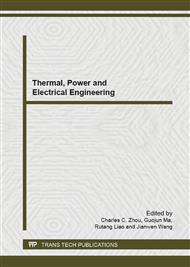p.376
p.382
p.387
p.392
p.397
p.402
p.407
p.413
p.417
Fault Diagnosis Based on Rough Set and BP Neural Network (RS-BP) for Gas Turbine Engine
Abstract:
This paper presents a new fusion diagnosis based on rough set and BP neural network for the fault diagnosis of gas turbine. The frame is designed to fusion fault diagnosis, which is composed by three parts: the rough set data pre-processor, rough set diagnosis model and BP neural network diagnosis model. Aiming at the difficulty in getting adequate fault samples in fault diagnosis, rough set theory is first used to process the original data, establish the decision table and generate rules, which can eliminate the redundant information and build the rough set diagnosis model. After that, according to the optimal decision attribute pre-treated by rough set, BP neural network is designed for fault diagnosis, which can reduce the scale of neural network, improve the identification rate, and improve the efficiency of the whole fusion diagnosis system. Finally, an example of gas turbine generator sets fuel system is taken as a case study to demonstrate the feasibility and validity of the proposed method in this paper.
Info:
Periodical:
Pages:
397-401
Citation:
Online since:
August 2013
Authors:
Price:
Сopyright:
© 2013 Trans Tech Publications Ltd. All Rights Reserved
Share:
Citation:


